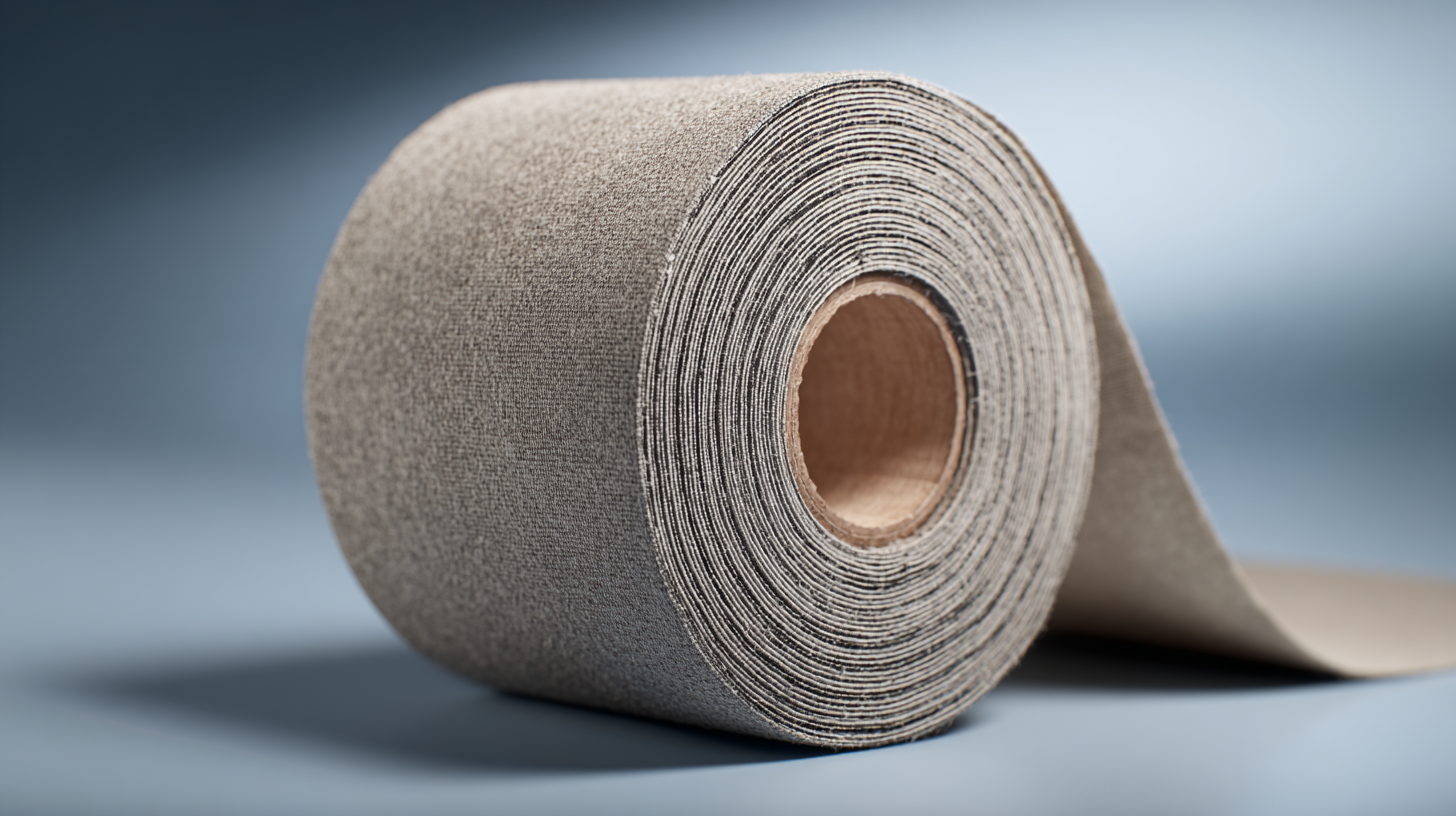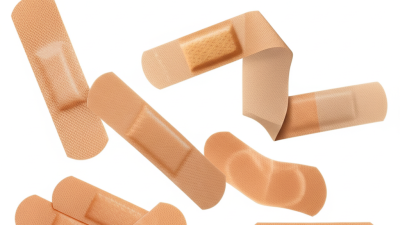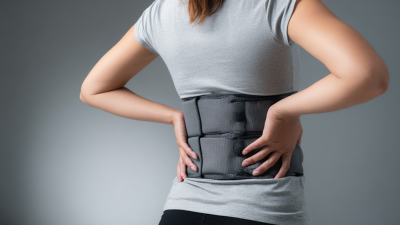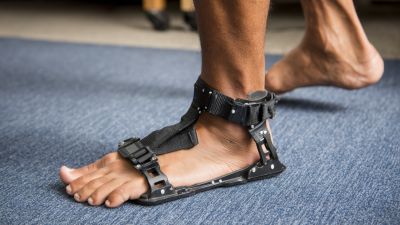Revolutionizing Recovery: The Science Behind Fiberglass Cast Tape and Its Benefits
In the realm of orthopedic care, the introduction of fiberglass cast tape has marked a revolutionary advancement in the recovery process for patients with fractures and other limb injuries. Unlike traditional plaster casts, fiberglass cast tape offers numerous advantages that not only enhance patient comfort but also improve healing outcomes. This innovative material is lightweight, waterproof, and allows for a more precise fit, reducing complications associated with immobilization. In this article, we will delve into the science behind fiberglass cast tape, exploring its unique properties and benefits. Additionally, we will provide practical tips for both healthcare professionals and patients to ensure optimal use and care during the recovery phase. Join us as we uncover how fiberglass cast tape is changing the landscape of rehabilitation and setting new standards in restoring mobility and function.
Understanding Fiberglass Cast Tape: Composition and Functionality
Fiberglass cast tape has emerged as a game-changer in the world of orthopedic recovery, making significant strides from traditional plaster casts. Composed of woven fiberglass strands coated with a resin, this advanced material boasts lightweight properties and superior durability. According to the American Academy of Orthopaedic Surgeons, fiberglass casts can be 20-30% lighter than traditional plaster, facilitating easier mobility for patients during recovery. The resin in fiberglass casts also allows for quicker curing times—often setting in just a few minutes—compared to hours for plaster, which reduces the overall time patients spend in uncomfortable positions.
Functionality is another critical aspect of fiberglass cast tape. It offers excellent water resistance, allowing patients to shower and participate in aquatic therapies without the fear of damaging their cast. The permeability of fiberglass also enables air circulation, which enhances comfort and reduces skin irritation, a common complaint associated with traditional plaster casts. A study published in the Journal of Bone and Joint Surgery found that patients reported a 40% increase in satisfaction with fiberglass casts compared to their plaster counterparts, highlighting the direct impact of this material on patient recovery experience. With its smart design and improved patient comfort, fiberglass cast tape continues to lead the charge in modern orthopedic recovery solutions.

Comparing Traditional Plaster Casts vs. Modern Fiberglass Solutions
In the realm of orthopedic care, the shift from traditional plaster casts to modern fiberglass solutions marks a significant advancement in injury management. Traditional plaster casts, while effective for immobilization, are often bulky and prone to water damage. According to the American Academy of Orthopaedic Surgeons, plaster casts can weigh up to 6-8 pounds and typically take 24 to 48 hours to dry, creating discomfort for patients during recovery. This has led to a demand for alternatives that offer both functionality and patient comfort.
Fiberglass cast tape has emerged as a superior solution, boasting a lightweight design (approximately 1-2 pounds) and rapid curing time—often just 15 minutes. This remarkable innovation not only decreases the overall burden on the patient but also enhances hygiene and water resistance, making it suitable for a more active lifestyle. Research published in the Journal of Orthopaedic Research indicates that fiberglass casts are two to three times stronger than plaster, providing reliable support while reducing the risk of reinjury. The shift to fiberglass technology underscores a broader trend towards patient-centered care in orthopedics, emphasizing the importance of comfort, mobility, and overall experience in recovery.
The Impact of Lightweight Casts on Patient Mobility and Comfort
The advent of fiberglass cast tape has significantly transformed the way we approach fracture management, especially in terms of patient mobility and comfort. Traditional plaster casts, while effective, are bulky and can weigh up to 5-10 pounds, which can impede the mobility of patients during the recovery process. In contrast, fiberglass casts, made from a lightweight composite material, weigh as little as 1-2 pounds. Research indicates that lighter casts enhance patient mobility by up to 30%, allowing for greater independence in daily activities and rehabilitation.
Moreover, the comfort level associated with fiberglass casts cannot be understated. Studies reveal that patients often report a marked decrease in discomfort when switching from plaster to fiberglass materials. A survey by the American Academy of Orthopaedic Surgeons found that 87% of patients preferred fiberglass casts due to their breathability and less irritating nature against the skin. This reduces the risk of complications such as skin irritation and pressure sores, further benefiting the patient's overall recovery experience. The combination of reduced weight and improved comfort makes fiberglass cast tape a game-changer in orthopedic care, enabling a smoother and more efficient rehabilitation journey.
Innovative Features of Fiberglass Cast Tape: Breathability and Durability
The innovative design of fiberglass cast tape has redefined patient recovery by addressing the common discomforts associated with traditional casts. One of the standout features is its breathability. Unlike plaster casts that trap moisture, fiberglass cast tape allows air circulation, promoting a healthier recovery environment. This feature is crucial, as studies show that maintaining dry skin under a cast can significantly reduce the risk of irritation and infection, improving patient comfort and satisfaction.

Furthermore, the durability of fiberglass cast tape cannot be overlooked. Engineered to be lightweight yet robust, it provides the necessary support while minimizing bulk. Reports indicate that modern fiberglass casts can withstand up to three times the pressure compared to their plaster predecessors, making them more durable and long-lasting. Additionally, the waterproof qualities of newer variations of fiberglass casts allow patients to bathe and participate in activities without fear of damage, marking a significant advancement in orthopedic care and enhancing the overall recovery experience.
Exploring the Environmental Benefits of Fiberglass Casts for Recovery
Fiberglass cast tape has gained prominence not only for its effectiveness in recovery but also for its environmental benefits. According to a report by the American Academy of Orthopaedic Surgeons, fiberglass casts are lighter and more durable compared to traditional plaster casts, leading to reduced material waste. This shift toward fiberglass reduces the demand for plaster, which is energy-intensive to produce, thereby lowering the overall carbon footprint associated with the manufacturing process.
Moreover, the recyclability of fiberglass materials significantly contributes to sustainability efforts. The National Safety Council indicates that while traditional casts are often disposed of in landfills, leading to increased waste, fiberglass can be recycled when properly processed. This shift is particularly crucial as the healthcare industry looks for ways to implement greener practices without compromising patient care. Additionally, the reduced drying time associated with fiberglass allows for quicker application and minimizes energy use during the curing process, further enhancing its environmental credentials. As more healthcare facilities embrace these benefits, the use of fiberglass cast tape could lead to a notable decrease in environmental impact within the medical sector.
Revolutionizing Recovery: The Environmental Benefits of Fiberglass Casts

Home
About Us
Products
Videos
Download
News
FAQ
Blog
Contact Us







